Hepatic encephalopathy, also known as acute hyperammonemic encephalopathy or portosystemic encephalopathy, refers to a spectrum of neuropsychiatric abnormalities occurring in patients with liver dysfunction and portal hypertension. It results from exposure of the brain to excessive amounts of ammonia.
On this page:
Terminology
Hepatic encephalopathy specifically refers to an encephalopathy occurring in patients with acute liver failure, a portosystemic shunt, or chronic liver disease. It is generally regarded as a reversible condition, although the long-term sequelae are being further studied 11.
Hepatic encephalopathy may be subclassified according to severity and pattern (acute episode, recurrent, or persistent) 11.
Chronic neurological damage ascribed to repeated episodes of hepatic encephalopathy is usually termed acquired hepatocerebral degeneration, which is discussed separately.
For the purposes of this article, we use the terms separately and discussion here is limited to acute hepatic encephalopathy.
Epidemiology
The vast majority of patients have portosystemic shunts in the setting of cirrhosis, either from the development of spontaneous shunting or as a result of transjugular intrahepatic portosystemic shunting (TIPS) 7. The clinical spectrum can rarely manifest in individuals who have portosystemic bypass without any associated intrinsic hepatocellular disease. The broader term "portosystemic encephalopathy" can be used for this reason.
Clinical presentation
The clinical manifestations of hepatic encephalopathy range widely from chronic episodic subclinical neurological dysfunction to acute fulminant neurological impairment, coma and death 4.
The latest consensus guidelines published in 201413 from the American Association for the Study of Liver Diseases (AASLD) and the European Association for the Study of the Liver (EASL) states that hepatic encephalopathy can be classified according to:
the underlying cause (type A, type B, type C)
the severity of its manifestations (using either the West Haven Criteria or the ISHEN classification, which differentiates unimpaired hepatic encephalopathy, covert hepatic encephalopathy and overt hepatic encephalopathy)
the chronology (episodic, recurrent, persistent)
the existence of precipitating factors (non-precipitated, precipitated)
In its lowest expression, hepatic encephalopathy can only cause memory leaks and visuospatial ability alterations. However, as it progresses, behavioral alterations and agitation appear, leading to obtundation and coma in later stages. A classically described manifestation of hepatic encephalopathy is asterixis or flapping tremor, which appears in intermediate phases. Its presence indicates an overt hepatic encephalopathy14.
In the majority of patients, a superimposed precipitating cause rather than worsening of hepatocellular function can be identified (particularly in acute situations). Such precipitants include:
infection (most common): 50% 4
-
excessive nitrogen-containing intestinal load
gastrointestinal bleed (e.g. from varices)
dietary intake of large quantities of protein (e.g. meat)
-
reduced nitrogen excretion
constipation
renal failure
-
metabolic or drug interactions
hyponatremia or hypokalemia (e.g. from diuretics)
sedatives
Grading
The most commonly used and accepted clinical grading system for hepatic encephalopathy is the West Haven criteria 12, based on level of consciousness as well as cognitive and behavioral assessment:
grade 0: no alteration in consciousness, intellectual function, personality or behavior
grade 1: trivial lack of awareness, euphoria or anxiety, shortened attention span, impairment of addition or subtraction
grade 2: lethargy or apathy, mild personality change, disorientation to time or place, inappropriate behavior
grade 3: somnolence to semi-stupor but responsive to verbal stimuli, confusion, gross disorientation
grade 4: coma, no response to verbal or noxious stimuli
Pathology
In hepatic encephalopathy, due to portosystemic shunting, ammonia from the digestive system or from elsewhere, which is usually metabolized by the liver reaches the systemic circulation. Although the exact mechanism of neurotoxicity has not been elucidated, ammonia is taken up by the brain and has been shown to be toxic to both astrocytes and neurons 4.
Radiographic features
MRI
MR imaging features of acute hyperammonemia include:
T1: high signal within the caudate nucleus, globus pallidus, putamen and anterior midbrain due to deposition of manganese15,16
-
T2/FLAIR
-
mild
symmetric high signal within the insula (most common), thalamus, and posterior limbs of the internal capsule, and cingulate gyrus 5-7
often reversible with therapy 5,6
-
severe
diffuse cortical edema and hyperintensity
perirolandic and occipital regions are typically spared
-
-
DWI
similar distribution to T2/FLAIR
reverse with appropriate therapy
-
SWI: nearly one-half have microhemorrhages of white matter or cortex 8
number and presence of microhemorrhages do not affect the outcome
MR spectroscopy: may show an elevated glutamine/glutamate peak coupled with decreased myoinositol and choline signals on proton MR spectroscopy 1,7
As the vast majority of cases of acute hepatic encephalopathy will be encountered in patients with established and chronic liver disease, chronic findings of acquired hepatocerebral degeneration are also usually present.
Treatment and prognosis
Acute hepatic encephalopathy can be rapidly fatal, while chronic hepatic encephalopathy tends to be a more indolent process. Identifying and treating precipitating cause is important and leads to resolution in up to 80% of patients 4.
Treatment usually entails the careful cessation of any offending agents (e.g. toxins, chemotherapeutic agents, antiseizure medications), treating contributing conditions (e.g. sepsis, GI bleeding), nutritional support (including the use of lactulose), and in some cases hemofiltration to remove excess ammonia.
Notably, the extent of severity on FLAIR and DWI correlates with the plasma ammonia level 5. More severe cases of diffuse cortical involvement (particularly on DWI) can be reversible but are more likely to be fatal, indicating the need for prompt therapy to treat the hyperammonemia in acute hepatic encephalopathy 5.
Differential diagnosis
The differential diagnosis includes other causes of hyperammonemic encephalopathy 6,10



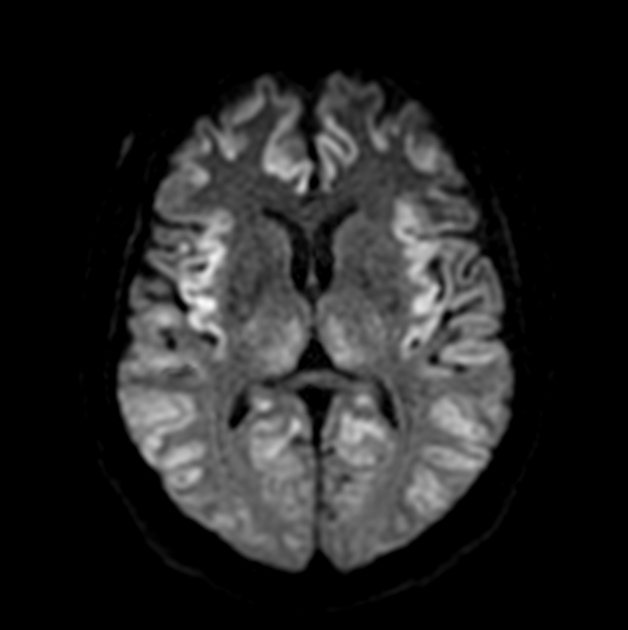
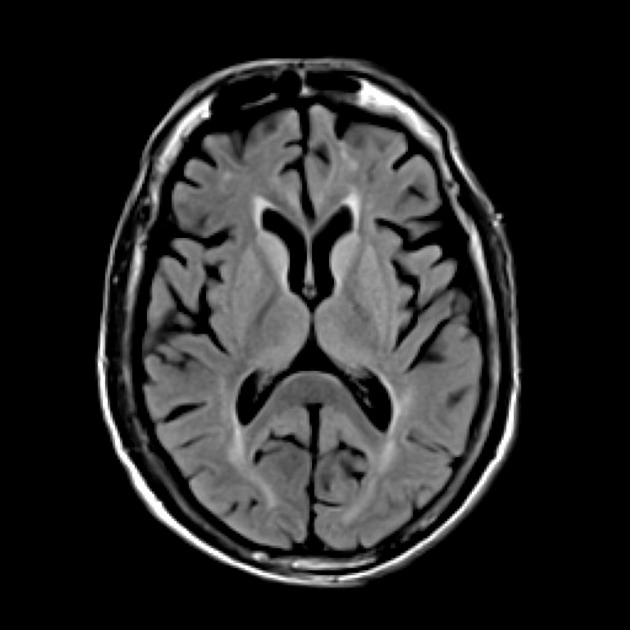


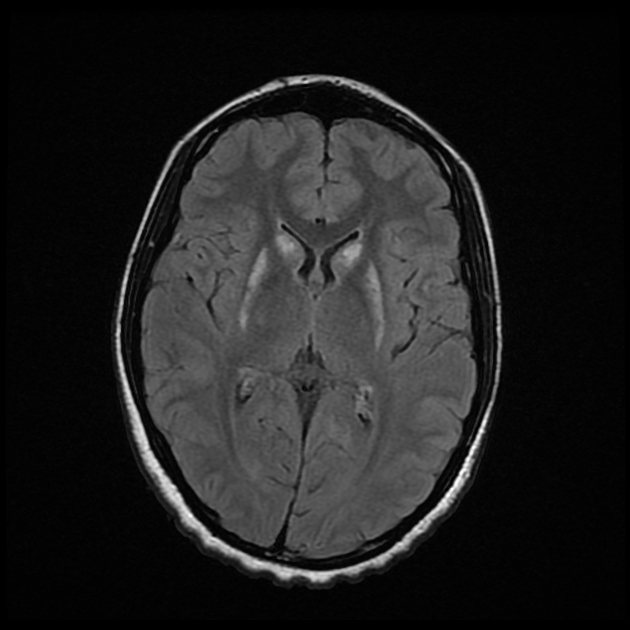
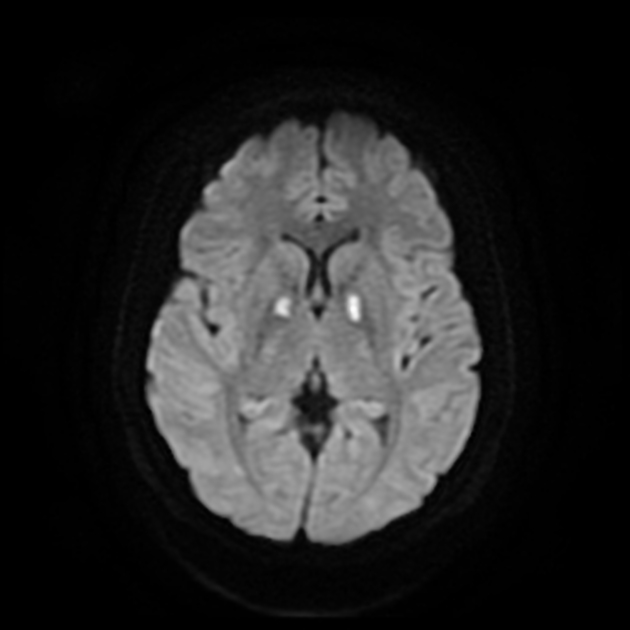
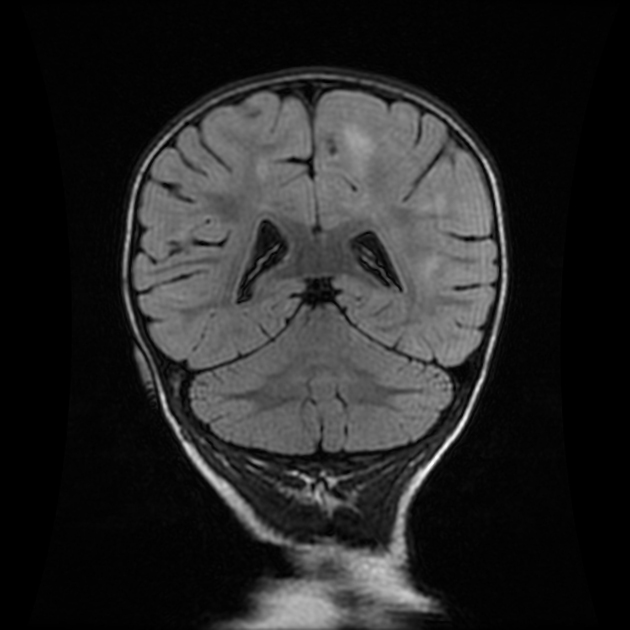


 Unable to process the form. Check for errors and try again.
Unable to process the form. Check for errors and try again.